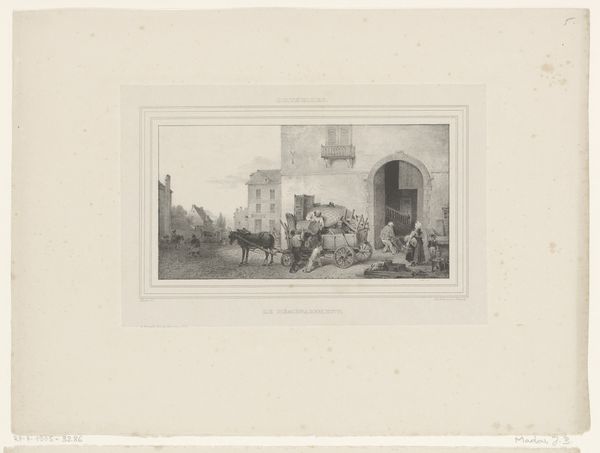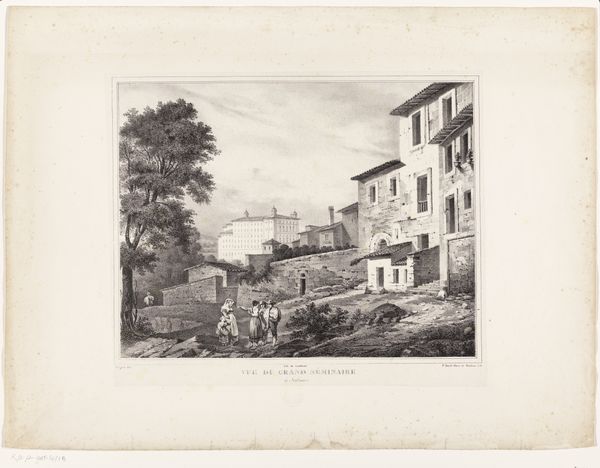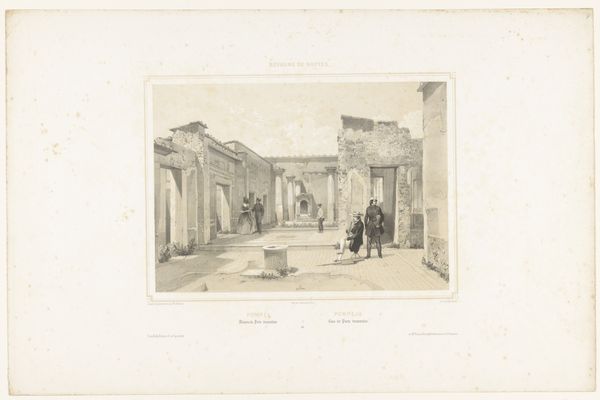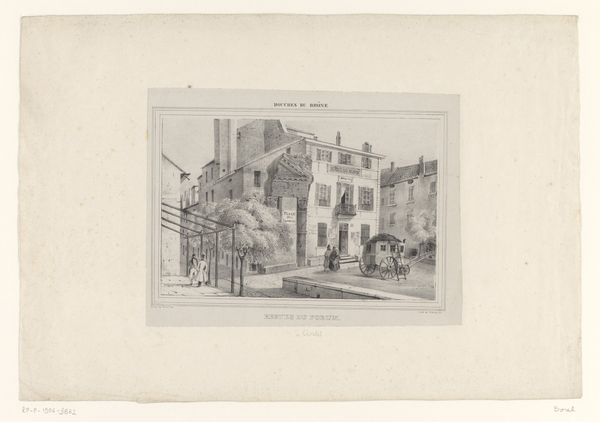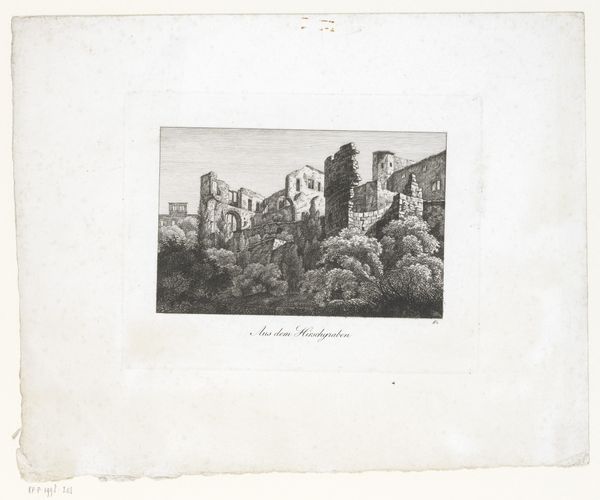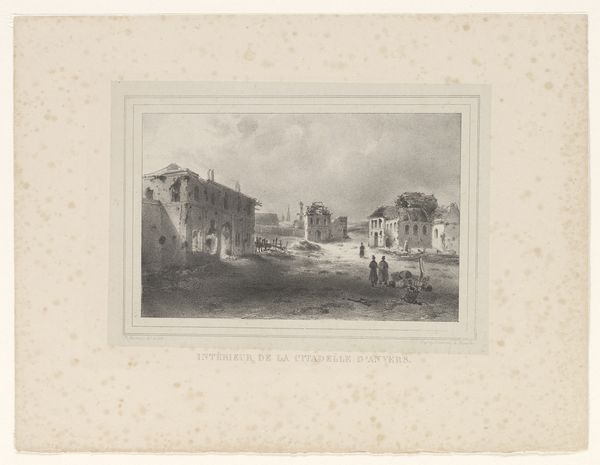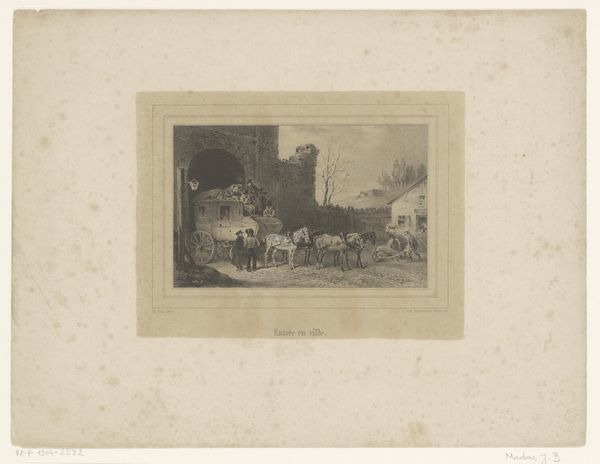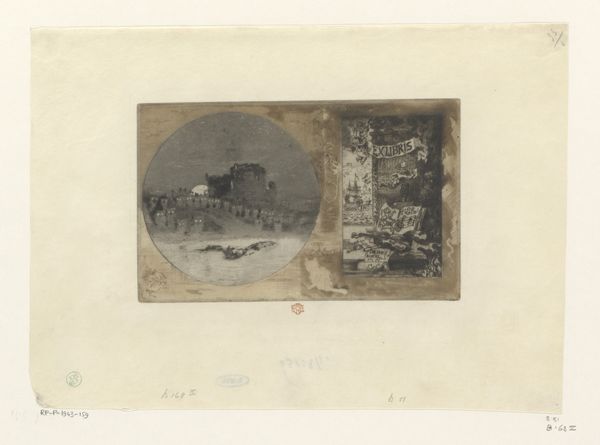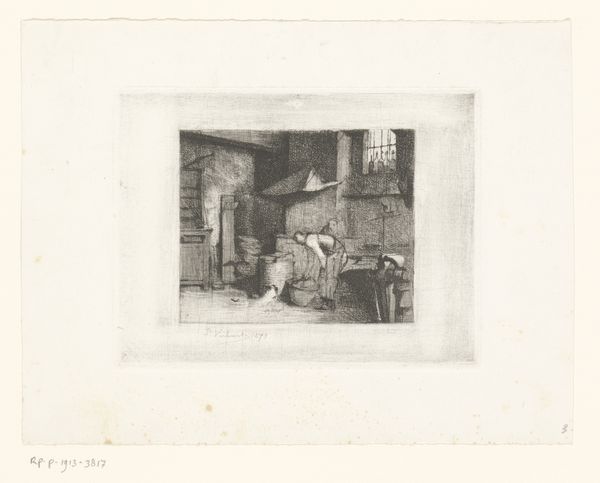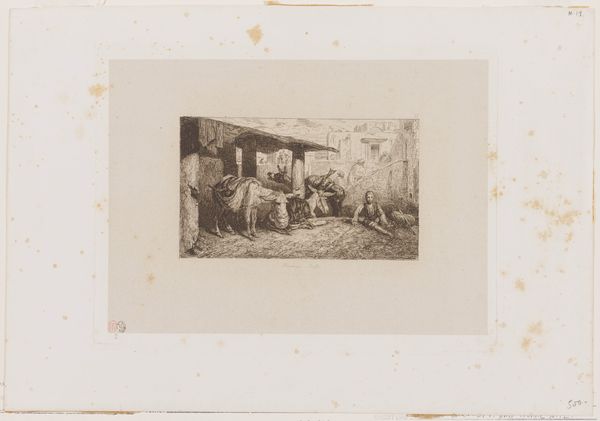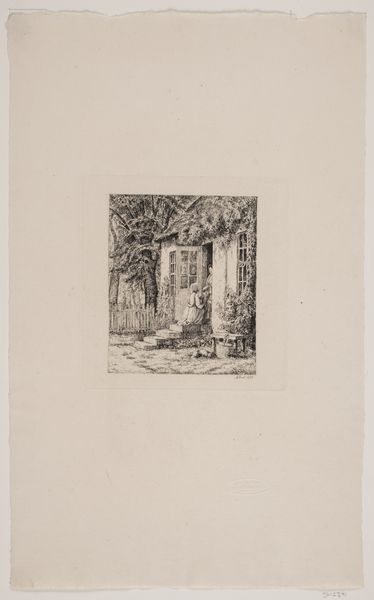
print, engraving
#
neoclacissism
# print
#
old engraving style
#
landscape
#
cityscape
#
academic-art
#
engraving
#
realism
Dimensions: height 420 mm, width 555 mm
Copyright: Rijks Museum: Open Domain
Curator: Welcome. Today, we're observing "View of Rome from the Capitol" by Léon Jean Baptiste Sabatier, created between 1818 and 1830. It's an engraving, currently held here at the Rijksmuseum. Editor: There’s a definite somberness to it. The muted tones, the high vantage point overlooking the city… it almost feels like a reflection on the grandeur and inevitable decay. The perspective creates such depth; I'm immediately drawn into the vista. Curator: Exactly. It is an excellent study in perspective and the technique of engraving at the time, particularly the level of detail Sabatier achieves. This print allows us to consider the social implications of city planning and the representation of power through architecture. Notice the clear stratification between foreground and background, a calculated construction for the viewer. Editor: The composition directs the eye purposefully, yes. I'm intrigued by how Sabatier employs light and shadow to sculpt form; see how the sun seems to glance off certain edifices? This really creates a dynamic contrast, especially in black and white, enhancing the three-dimensionality. Curator: We can speculate, too, about Sabatier's choice of printmaking. Its reproducibility allowed for a wider distribution of this view of Rome. Was this to cater to a growing market of tourists or to reinforce the empire's dominance across the lands? Was it for propaganda purposes, demonstrating Roman civility over the unruly populace? The means of production matters just as much as the subject here. Editor: Interesting points. Beyond the material considerations, observe the sheer mastery of the line work. Each stroke contributes to the overall form, texture, and emotional tonality. Those dense clustered lines form shadow perfectly. Curator: Certainly, his mastery is undeniable. Looking closely, one begins to think about the individual labor and skill it took to produce the print; about the cultural politics it embodies, how he represents space, place, and people, through his rendering. It’s not just about what you see, but who is able to see it, and how it serves their understanding of place. Editor: Indeed. On closer inspection, the interplay of sharp definition and subtle fading allows the cityscape to truly emerge, bringing our eye from ruin and wall to classical achievement. Curator: Precisely, and examining the print within the context of 19th-century Neoclassicism allows us to recognize the societal values placed on this type of historical and urban documentation through art. Editor: It provides an incredible level of depth in texture and atmosphere, giving one a unique appreciation for Roman structures. Curator: Seeing it this way, through both form and its place in history gives you an interesting perspective about the artwork itself, does it not? Editor: Absolutely, this interplay enriches my understanding of the artist’s perspective, I feel.
Comments
No comments
Be the first to comment and join the conversation on the ultimate creative platform.
